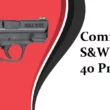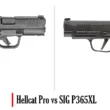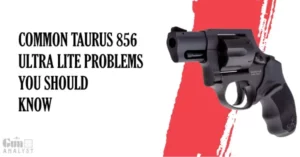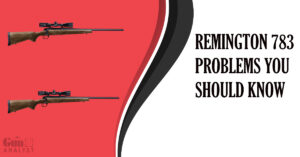The Remington 887 is, to say the very least, average. It’s neither sliced bread nor a boat anchor. But during the geese season, lots of people use it.
The most common problems with the Remington 887 are: nitro magazine jamming, misfires, light primer strike issues and trigger problems.
After reading this article, you will understand the solution to each of these issues. Additionally, you will learn how users feel about the gun. So stay tuned!
Features & Specifications of Remington 887:
- Action: Pump-Action
- Cartridge: 12 Gauge
- Product weight: 7.38 lbs
- Product length: 48.5 inches
- Capacity: 7+1 Tactical, 4+1 Standard
- Finish: ArmorLokt, Synthetic
- Barrel length: 28 inches
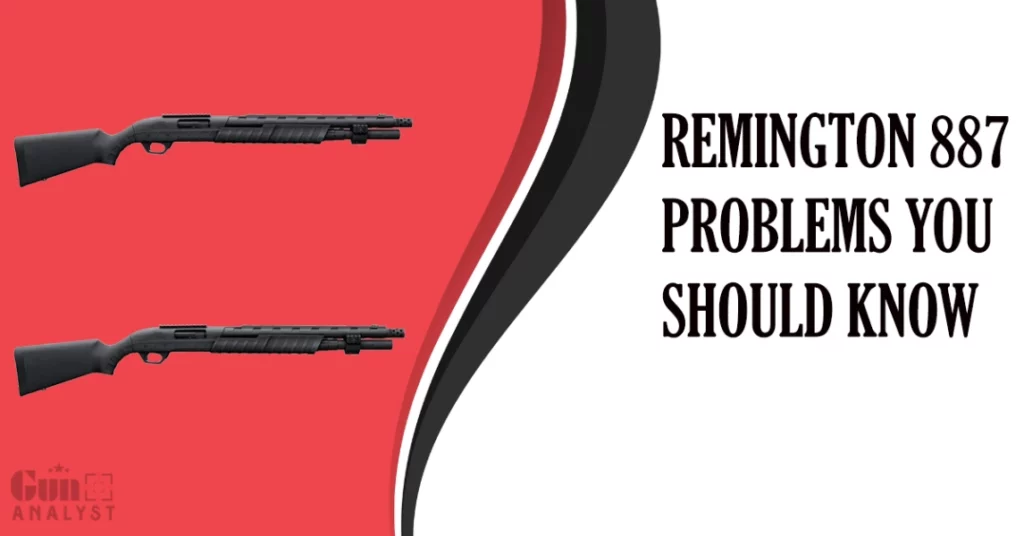
Common Remington 887 Problems and Solutions
| Problems | Solutions |
| Nitro Magazine Jamming | Clean the gun with steel wool on a brush. |
| Misfires | Troubleshoot the firing pin and bolt. |
| Light Primer Strike Issues | Add additional material to the side. |
| Trigger Problems | Replace the trigger assembly. |
Nitro Magazine Jamming
After firing, the empty shell is ejected without a problem. However, when loading a fresh, unfired shell, the slide partially opens and the gun won’t fire.
The gun then becomes jammed and unable to move the slide. The round is not properly seated in the carrier. And as it is being loaded, one of its sides collides with the side of the chamber.
The Fix
The Remington 887 had numerous issues, which contributed to its short existence on the market before it joined the ranks of Remington’s VesaMax.
The jamming Nitro magazines are just one of the issues. The simplest solution to the issue is to use a cleaning rod segment with a 20 gauge brush in it (if it is a 12 ga).
To make the brush fit securely in the gun’s chamber, wrap it with steel wool until it is thick enough. Place the rod inside the drill.
Spray gun oil on everything and run the drill at full speed in the chamber for about a minute (while you’re at it, move the drill in and out a bit). Then repeat the procedure with finer grades of steel wool.
Clean the barrel when you’re done. In addition to this, make sure that the forend nut is still tight.
Misfires
There is some movement in the forend when a round is loaded into the chamber. You will be able to move it back and forward by roughly 1/8″.
The gun always fires when the forend is moved forward and near the muzzle. However, the gun will misfire if you pull the forend in your direction.
The Fix


This is because the bolt carrier moves away from the bolt head when the forend is moved back towards the shooter. It results in a misfire because the firing pin does not protrude from the bolt head as much. The pictures show forends pushed forward and then backward.
Pull the trigger assembly out, spray CLP in the hammer spring region, and place a rag in the area where the hammer would hit.
Spray CLP into the bolt and check that the pin moves easily. Make sure there is nothing in the barrel where the bolt rotates, preventing the bolt from fully seating while it rotates (just a few degrees).
Then work the hammer many times by hand. If nothing works, you probably need a new firing pin spring. Get in touch with Remington.
Light Primer Strike Issues
There is an issue with the light primer strikes. The shooter must keep the slide in the most forward position or the gun will not fire.
The Fix
This can be remedied by adding additional material to the bolt’s rear left guide/tab, which controls how much slack the action has when locked in the forward position.
This guide/tab will fit against the slide release lever. The addition of material limits its ability to go backward. You can build a correct shaped part with chemical metal and a file, then glue it on with hybrid Loctite.
Trigger Problems
When you pull the trigger, you may be unable to move the slide to cycle through the following round. If you keep trying, you might get both an empty and a live round of shells. Cycling eventually comes to a stop because of this problem.
The Fix
When you draw the pump back to eject the expended shell, all of your live rounds should either spit out the ejection port, jam with double feed or fall out the bottom. Regardless of how slowly you cycle the weapon.
The weapon should not be fed twice or three times. Because the trigger assembly’s timing is incorrect.
Contact Remington’s Customer Service. A new Trigger Assembly should be sent to you. It should be used in place of the old one.
User Feedback on Remington 887
Before Remington pulled the plug, the early reviews were primarily harsh towards the Remington 887. Although they appeared to be improving.
Remington gave up on this one fairly quickly. However, all 887s were subject to a safety recall by Remington in 2014 because of a slam fire problem.
It dislikes light loads. And it feels like a toy gun because of the awful amour lokt bullshit. The camo/plastic coating can immediately crack off, and for some folks, it might be too front-heavy.
For almost the same money, you can purchase a much better gun. I would research Benelli nova/supernova, Browning bps, a Remington 870, and even a Mossberg 500 if I were you.
Additionally, there are numerous rust concerns and the safety is very difficult to disengage. Moreover, the release button keeps sticking in and out.
The Remington 887, however, does swing well and appears to be very balanced.
Users are mostly unhappy with this one. It seems like a big hit or miss with people.
Top 3 Alternative Guns of Remington 887
Based on comparing the specs, features, practicality, and performance, I have found the 3 best alternatives to Remington 887.
Benelli Nova
The Supernova boasts Comfortech stock and chromed bore, steel (plastic over mold) receiver, stronger bolt lugs, and a mag cutoff. It does have a lesser recoil than the 887s. The Supernova is a far better option for the same price.
Remington 870
The 870 is extremely adaptable and is undoubtedly a workingman’s shotgun. The Remington 870 is the model that can be customized the most, and aftermarket components are widely available. Hastings barrels, rubberized stocks, and plastic, fiberglass, and stocks with or without rails are some worth mentioning.
Mossberg 835
The Mossberg 835 consumes all loads without any problems. The 2 3/4″ fits perfectly. The top-mounted ambidextrous safety is Mossberg’s main selling point. Even under the most extreme circumstances, they can live and keep working perfectly.
Frequently Asked Questions (FAQs)
Where is the slide release on Remington 887?
The slide release is near the trigger guard, which may be a problem for some users.
What is the Remington 887 styled after?
Benelli or Stoger.
What loads does the Remington 887 shoot?
It shoots 2 ¾, 3, and 3 ½ inch loads.
What shells does the Remington 887 shoot best?
Any 12ga shell.
Which Remington 887s are better?
The Remington 887s produced after January of 2010 show fewer problems.
Conclusion
The Remington 887 was originally designed to be a cheap gun that can fire a 3 1/2″ shell. The waterfowler is the target for this gun.
The gun is not really for clay or pheasant shooting. It is attractive and light. However, the plastic barrel is enclosed by another barrel.
The Remington 887 itself weighs about the same as the Super Black Eagle and is quite light. The firearm is amazing for the price.
You might want to give it a try but I must warn you of the frequency of issues. It’s a hit or miss really!



